To-Do List: Appliances
Appliances constitute a significant investment, which has proven problematic given my budget crunch. Would I love to have a kitchen packed with the best of the best? You bet! But I can't afford the twelve grand that would take. One of the bigger breakthroughs was finally convincing myself I really didn't need to have all-matching appliances. It was a tough sell, though—I'm pretty anal about that sort of thing.
Dishwasher: The Last Appliance (Almost)
On Thursday, 8 April 2021, I was "stimulated" (COVID economic stimulation payment). And I immediately ordered the last appliance I needed. I chose a Whirlpool Model WDF520PADM. Whirlpool may make lousy washers, but their dishwashers are among the best-rated in their price class. My criteria were: stainless steel exterior, to match the other appliances, and stainless steel tub, because plastic tubs get gross. Although I prefer the aesthetics of the top-control style, a front-control unit saves money. Delivery is scheduled for 15 May.
Freezer Chest: The Very Last Appliance
Although I doubt I'll ever use it, the money I saved on the dishwasher model I chose left enough cash for a freezer chest. I got an Insignia, a Best Buy brand, which is seriously cheap yet well-rated. How could I turn it down? I'm sure whoever gets the house after I'm gone will appreciate having one. It'll be delivered along with the dishwasher.
Wall Oven: A Costly Puzzle
I knew a wall oven would cost more than a conventional stove, but I'd no idea how much more. And if you want a combination unit (conventional oven plus microwave), it's even costlier. The original unit I was considering was a Bosch, which was well over three grand. So I backed down to one of the cheapest combos I could find, a Frigidaire, at two and a half grand. Now, get this: if I ordered a built-in single wall oven and a built-in microwave, the price drops to twelve hundred. (Strangely, the trim kit required for the microwave is almost as much as the microwave itself—yikes.)
But wait, it gets more complicated. While going with separate units would be much more economical, it would also require tearing out and completely rebuilding the oven wall, including the two cabinets I'd already built, because separate units together were well over a half-foot taller than a combo. Then, just as I was about to pull the trigger on the separate units, Frigidaire introduced a brand new combo unit, Model FGMC2766UF, the final price being just a couple hundred more than the separate units. And believe me, that couple hundred would be worth not having to rebuild the whole bloody wall along with two cabinets.
Why did I choose a wall oven/cooktop combo rather than a traditional stove, which would have been far and away more economical? Ergonomics. A traditional stove places the oven well below the waist, and I'd have to bend down to access it, whereas a wall oven allows me to stand upright. Having four bad discs that will never get better, I'm perfectly willing to pony up the extra cost for this convenience. Not to mention that a conventional microwave eats up counter space.
I went without for quite a long time, but thanks to having sold my car (owing to health reasons), the unit was ordered on 29 March 2021. Completed on 3 April 2021, installation was a very interesting exercise.
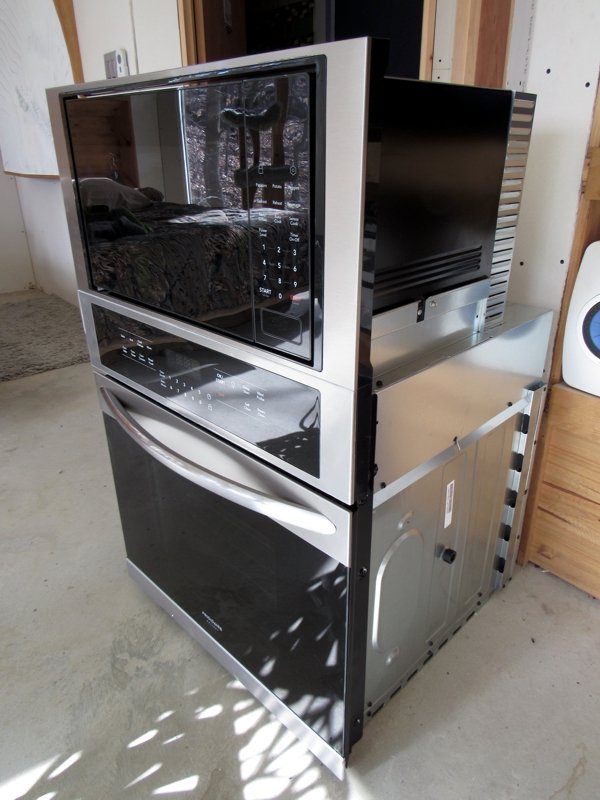
Refrigerator: What Do I Really Need?
My first pick was a high-end French door style unit that would cost almost as much as all of the other appliances rolled together. Obviously that wouldn't do, and since then I've been backing off one price point at a time. Ultimately I realized that I really didn't need a French door style unit; in fact, after carefully measuring the area around the fridge, I discovered the bottom freezer drawer sucked up a lot of space when open, it wouldn't be kind to my back, and there's a more space-economical design that's cheaper, if only because it's becoming somewhat passé: the side-by-side.
I've also never cared for in-door water dispensers, but since these are very popular, it's tough to find units without them. Persistence paid off, however, when I finally found the Whirlpool Model WRS315SNHM side-by-side refrigerator. Not having an in-door ice maker/water dispenser frees up a substantial amount of freezer space in the most important part of a fridge: the standing-human-height area. Plus, I'm perfectly happy making ice the really-old-fashioned way—with ice trays.
Yes, Whirlpool may make the worst washing machines known to man (scroll down for the evidence), but their refrigerators are among the better-rated—go figure. As a bonus, the "hidden" door hinge design on this model allows one to create a built-in look by wrapping the unit in finished cabinet wood. I liked that option because it would greatly simplify installation and finishing.
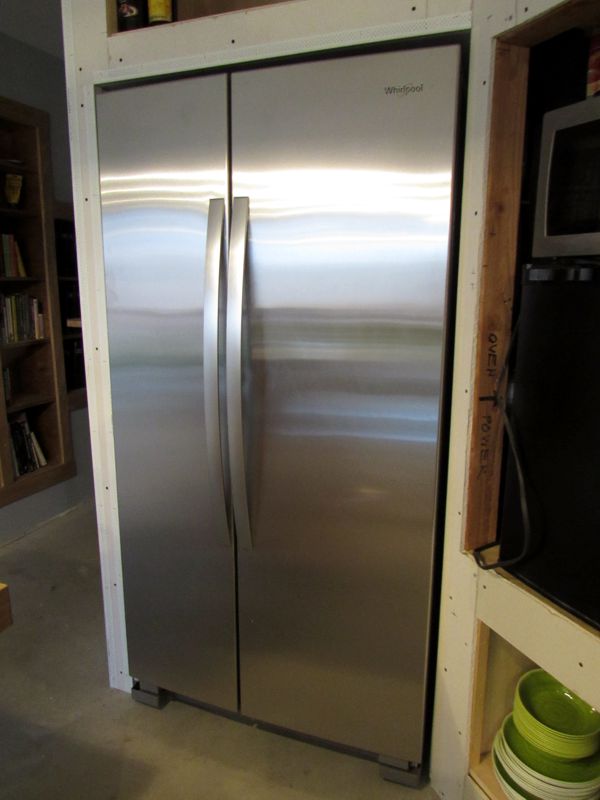
Induction Cooktop: A Viable Option to Gas
I've cooked on just about anything that makes heat, and my preference has always been gas. But here we have an electrically-powered option that behaves so much like gas that it's spooky. If you've not used induction, and are skeptical of the reviews, don't be. As much as I prefer gas, I do not like having gas in my home. And here's a practical alternative.
What makes gas so special? Control. Shut it off, and the only thing that retains any heat is the pot or pan itself. Induction is just like that: lower or shut it off, and the response is the same. Plus, it heats up pots and pans faster than gas—yes, I wouldn't have believed it until I tried it. Reason? An induction cooktop has no heat source; the heat source is the pan itself. And just to make it even more appealing, induction units are now quite economical; mine was only $350.
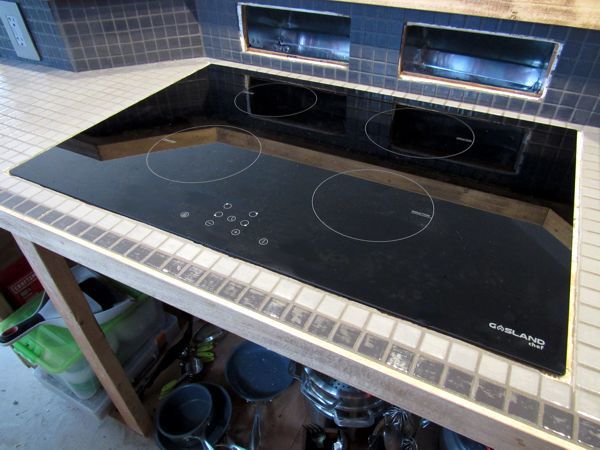
Washer and Dryer: A Long, Soggy Saga
It all started with a gift: I was offered a washer and dryer (below) as a "housewarming" gift from a close friend. Unfortunately, the Whirlpool washer I received was a lemon—it failed to function properly right out of the box. It filled with water, immediately drained it (along with the detergent), and then stopped, refusing to do anything else. Several re-starts, unplugging and plugging, water filter cleanings and who knows what all else failed to change its behavior. Which left me with a large bag full of sopping wet t-shirts and underwear that I had to haul to the local laundromat to finish washing and drying. To say that I was seriously miffed would be a significant understatement.
Online accounts echoed the same sad stories as mine, and evidently as many as 15% of their machines are defective—which is galling, because it means Whirlpool doesn't give a rat's behind about quality control. And Whirlpool "proudly" produces these pieces of garbage in the USA, which regrettably makes us look woefully incompetent. Even if the unit did manage to function properly, it would have been a royal pain to use, as just filling the tub took more than ten minutes. Consequently, if you're considering a Whirlpool Model WTW4816FW—or any other model that looks suspiciously similar, regardless of manufacturer—do not buy it.
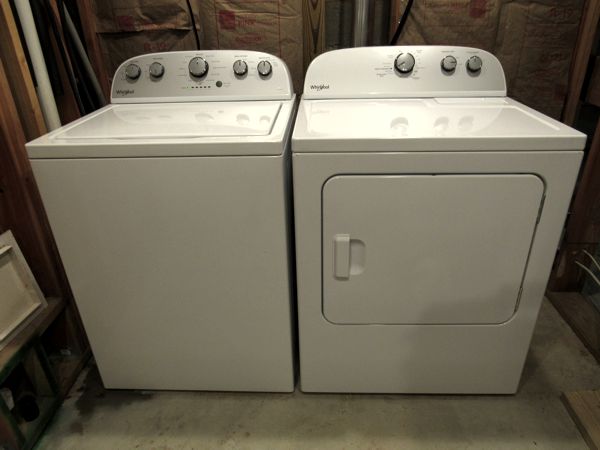
So I immediately went on a crusade to find a decent washing machine; unfortunately, the times they are a-changing. While I was growing up, my family had a Kenmore washer that was still going strong after 18 years—just try and find a modern washer that will last half as long! The problem is that everyone has gone to electronic controls because they're cheaper; unfortunately, they're not as reliable as "old-fashioned" mechanical controls. Worse, manufacturers have caught on: reliable machines are not good for business.
The Internet offers a dismal look at the sorry state of affairs: no manufacturer entirely escapes bad news. Even the widely-regarded Consumer Reports has a significant problem: the customer reviews on their website conflict—often significantly—with their own reports. Most likely this is because CR briefly tests new machines, but doesn't use them regularly over a period of years. What to do?
The best I could hope for was just look for a convergence of opinion. The advantages I had were that 1) I knew how to use Internet tools and research this stuff; and 2) my needs are fairly minimal—it's just me and my cats, so I won't be placing the same demands on an appliance as a typical family of 4.3 people. Thus, a slightly less-robust machine might be adequate, but obviously I wasn't about to settle for a dud.
Here are the facts: Front-loaders use far less water—up to 20 gallons or more per load less (even for me with a well, water isn't free, since I have to pay to pump it out of the ground, and then pay to pump the waste water into the disposal field). Also, based on reviews, top-loaders tend to fare more poorly in terms of performance and reliability. So, I'd pretty much resigned myself to a front-loader—which meant rebuilding the platform I'd just removed for the top-loader I was given.
Ultimately the models I settled on were:
- LG Model WM3500CW washer
- LG Model DLE3500W dryer
Unfortunately, these cost twice as much as what I'd returned; that meant having to share the financial burden with my friend—which was not the original plan. But, if I wanted higher-quality, more reliable appliances, that's what I had to do. So, I bit the bullet. The washer arrived on 22 June 2019; the dryer came 5 July. I'd like to have had something other than white, but it definitely wasn't worth over $100 more each just for a color. Besides, they're tucked away in a closet, not sitting in the middle of the living room; who cares if they're boring white?
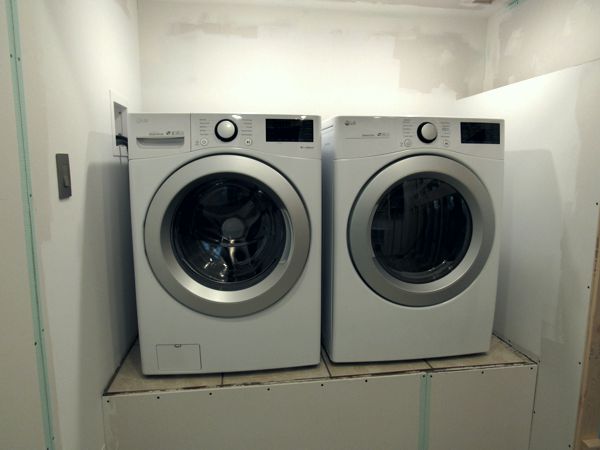
After using the new-new washer and dryer a number of times, I can honestly say I'm quite pleased with the results. The washer is surprisingly quiet, it cleans well, and saves water and energy in the process. The dryer is, well, a dryer—it works as well as one might hope (I don't think they've changed much, if at all, in the last 50 years). In the end, I'm actually glad the Whirlpool washer failed, as I can't imagine it performing anything like the LG.
